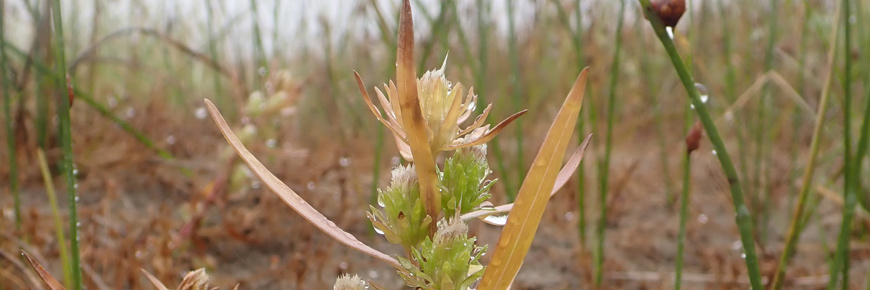
Plants
Kouchibouguac National Park
The Gulf of St. Lawrence Aster is a small and fragile annual coastal plant found on brackish sand or mud in dune slacks, in sheltered salt marsh or on sandy beaches in protected coves. Although it can reach sizes of up to 40 cm, this often inconspicuous species usually only averages 3 to 5 cm in height. Gulf of St. Lawrence Aster has smooth elongate leaves, with small flower heads that range from a whitish to pinkish colour, and produces dry fruits called achenes. Much like those of dandelions these achenes each bear a tuft of fine whitish hairs that help them get dispersed by wind. All known Gulf of St. Lawrence Aster populations occurs in coastal habitats such as lagoon shores, dune slacks and dry stretches of salt marshes. This annual plant grows in moist, mostly sandy soil, typically on gently sloping ground just above the high-water line in areas with sparse vegetation. It’s fairly specialized in its habitat and doesn’t deal well with frequent exposure to salt, drought, or competition from other species. Essentially, this plant plays a dangerous game: it doesn’t tolerate storm waves and salt water flooding but relies on them to create its preferred habitat of open moist sandy shore. The Gulf of St. Lawrence aster is exclusively found at a handful of sites in New Brunswick, Prince Edward Island and Quebec’s Magdalen Islands. It’s one of very few plant species to have originated in this part of the world after glaciers retreated roughly 10,000 years ago. Ultimately, the fate of this unique species is closely tied to how sea-level rise and climate change will unfold in the region. For more information on the conservation work related to this species, please visit our page on the Gulf of St. Lawrence Aster. This rare coastal species is restricted to our largest stable barrier dunes. Although it ranges from Atlantic Canada to North Carolina, Canadian populations are considered to be of a distinct variety which is endemic to the southern Gulf of St. Lawrence. Gulf of St. Lawrence Beach Pinweed is only known from a total of 15 sites in New Brunswick and Prince Edward Island. Sea-level rise and increased storm frequency related to climate change are the most significant threats to its survival. Our Resource Conservation staff have done extensive work on this species in recent years, implementing long-term monitoring protocols, surveying all suitable habitat within the park and its surrounding region, and documenting over two thousand precise locations where plants occur. The park is committed to its important role as a steward of this species and its remaining habitat. Roughly half of the global Gulf of St. Lawrence beach pinweed population is found on Kouchibouguac National Park’s dunes! Eelgrass is a common marine angiosperm that grows in shallow coastal waters occurring in sub-tidal and intertidal regions in eastern Canada. Eelgrass meadows provide vertical structural complexity to the near-shore marine landscape and like other seagrass habitats are known to support high density and diversity of fishes and other aquatic organisms, compared to un-vegetated sandy or muddy bottoms. Higher faunal abundance, including the recruitment of juvenile individuals into seagrass habitats, favours the growth and survival of fish over time. Refuge from predation, enhanced food resources, and habitat structural complexity, are generally considered most important to the function of seagrass habitats for fishes. Predation is lower in eelgrass beds than un-vegetated substrates due to reduced predator foraging effectiveness 2 (visual and swimming capabilities) in densely vegetated compared to un-vegetated areas. One of very few truly salt tolerant fully aquatic plants, Common Eelgrass represents one of the park’s most important species. In the park’s estuaries, this plant is essential to the maintenance of this ecosystem’s productivity and its role as a nursery for many fish and shellfish. Without it, numerous species of marine wildlife would lose essential habitat. When deposited on shore by wave action, uprooted individuals are also key in the ecology of salt marshes and dunes. Although Common Eelgrass remains abundant within the park’s estuaries, recreational motor boat traffic can lead to local declines by tearing up plants and scraping shallow bottoms. The recent arrival of the European Green Crab, and an aggressive exotic species that uproots Common Eelgrass as it forages, represents a present and increasing threat. Our Resource Conservation team intends to implement Common Eelgrass monitoring efforts in the near future, using this species as an additional indicator of estuary health. American Beachgrass also stands among the park’s most important plants. Considered a keystone species, it is essential to the formation and maintenance of our coastal dune ecosystems, where its dense extensive root systems, stems and leaves capture and hold sand. In fact, this “architect of the dunes” is essential to the creation of habitat for numerous coastal species. Considering that dunes are in turn essential to the maintenance of salt marshes and estuaries, the true ecological importance of this species for coastal ecosystems is evident. To protect the park’s American Beachgrass and dune ecosystems, our Resource Conservation team is active in monitoring dune movement, plant growth, severity of storms, and educating the public. Closure signs and restricted area panels are erected in fragile zones of the dune where beach grass grows in an effort to keep visitors away. Few environments are as fragile as dunes, also called barrier islands. They are held together only by the roots and rhizomes (underground stems) of the plants that grow on them, and are very vulnerable to winds, waves, and human trampling. Repeated foot and vehicle traffic kill the plant, which in turn destabilize dunes, resulting in increased erosion, blowouts and breaches. Please do not pick any plants, and stay off the vegetated dune areas.Gulf of St. Lawrence Aster (Symphyotrichum laurantianum)
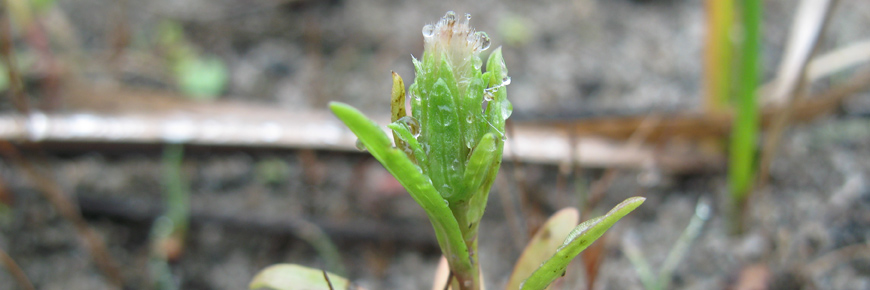
Gulf of St. Lawrence Aster (Symphyotrichum laurantianum)
Beach Pinweed (Lechea maritima)
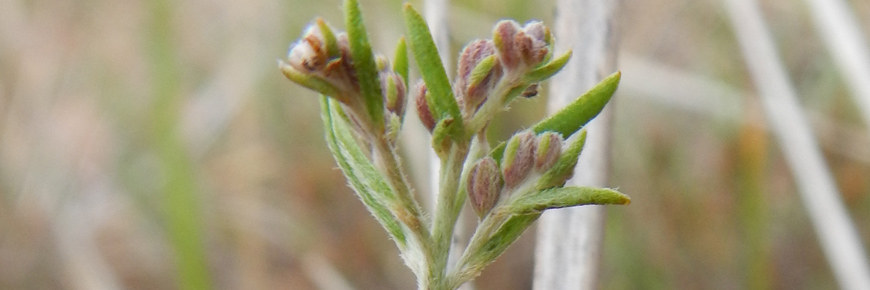
Beach Pinweed (Lechea maritima)
Common Eelgrass (Zostera marina)
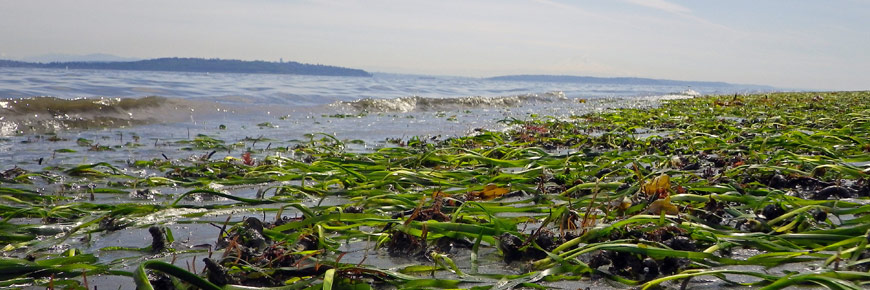
Common Eelgrass (Zostera marina)
American Beach Grass (Ammophila breviligulata)
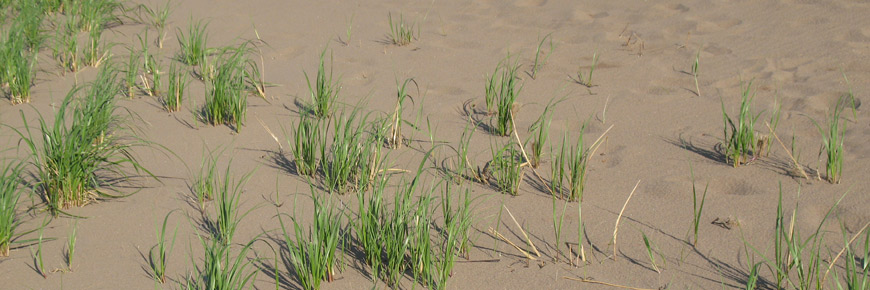
American Beach Grass (Ammophila breviligulata)
- Date modified :